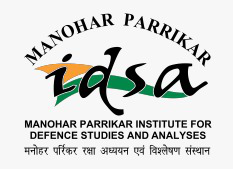The Unease amid Newfound Warmth in Pakistan–Bangladesh Relations
Pakistan–Bangladesh bilateral relations may be witnessing some warmth due to Bangladesh's changed domestic political situation, but the ghost of 1971 still casts a shadow.
Pakistan–Bangladesh bilateral relations may be witnessing some warmth due to Bangladesh's changed domestic political situation, but the ghost of 1971 still casts a shadow.
The possibility of a three-pronged strategic encirclement involving China, Pakistan and an unstable Bangladesh necessitates a recalibrated Indian approach.
Bangladesh's Chief Adviser, Muhammad Yunus, facing mounting domestic challenges, has chosen to engage with China first rather than India.
The corruption allegations relating to the nuclear power plants being constructed with Russian assistance could significantly impact the pace of development.
बांग्लादेश में शेख हसीना की सत्ता से बेदखली के एक महीने पूरे होने के बाद भी अंतरिम सरकार देश में वृहद सुधारों का रोडमैप प्रस्तुत करने में विफल रही है|
Bangladesh’s ability to sustain FDI and its role in regional supply chains is in focus after the recent domestic political turmoil.
Prime Minister Sheikh Hasina's state visit, the first during Prime Minister Narendra Modi's third consecutive term, underscores the importance both nations place on the India–Bangladesh relationship.
Taking note of the strategic importance of India and Bangladesh for each other, the report cautions against complacency and argues that the Indian PM’s visit provides an opportunity to take India-Bangladesh relations to a higher trajectory and move towards a strategic partnership. The significance of strong India-Bangladesh ties goes beyond the bilateral context. Good relations between India and Bangladesh will have positive influence on the region. Regional countries like Nepal, Bhutan, Myanmar and Thailand will benefit from trade and transit connectivity between India and Bangladesh.
This volume includes a collection of papers contributed by eminent scholars and analysts from the South Asian region on how they visualise South Asia a decade hence. It is recognised that the region suffers from several constraints that has made common challenges difficult to address; nevertheless, there is an optimism that the region will move forward steadily albeit slowly, to evolve a common agenda, and shape a regional identity that would form the bedrock of any cooperative endeavour.
This book is an attempt to profile important militant groups presently active in South Asian countries. The threat perception from each group has been covered in this book in details. The book will be useful for further research on militancy, terrorism, radicalisation and security related issues.



